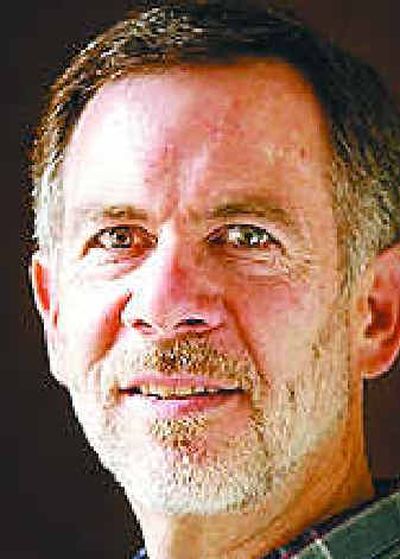Kokanee find their way back at Priest

Gary Rudie was seeing red at Priest Lake on Wednesday.
He’d been down to the beach in Kalispell Bay when he called simply because he had to tell somebody.
“The kokanee are making a comeback,” he said. “You go to places like Copper Bay and all you see is a big red mass of spawning kokanee.”
Rudie has a perspective on the highs and lows of fishing at Priest Lake.
“We’ve been here 40 years and I remember when the silver limit was 50 fish a day,” he said. In the 1970s I remember counting 32 boats trolling in the narrows up at Elkins (Resort). They were all going clockwise, and God help you if you messed things up by trying to go the other direction.”
In 1974, Rudie landed a lake trout that had fattened to 52 pounds on Priest Lake’s fertile pastures of kokanee.
“It was phenomenal fishing, and the cutthroats were fantastic.”
The only thing more awesome than the peak of fishing at Priest Lake is the speed with which the fisheries deteriorated after the introduction of mysis shrimp and the boom of voracious lake trout.
Nowadays, you can’t even keep a kokanee or cutthroat if you hook one.
But that’s all fish and water under the bridge.
Rudie called to say his hopes are high.
Big schools of the land-locked sockeyes are spawning in sandy shorelines.
“It’s great to see this again,” he said, although he winced a little when he mentioned that many fish appear to be spawning in water as shallow as eight inches.
Despite last year’s lake level agreement with the Idaho Water Resources Board and Avista, some of the kokanee eggs deposited in shallow water this year will perish as the lake level continues to drop another seven inches to its winter level.
Idaho law requires the annual 3-foot drawdown to be complete by the end of December, and lake marinas like to keep their docks fully in the water to accommodate autumn business.
Nevertheless, Idaho Fish and Game biologists convinced Priest Lake property owners and businesses two years ago that the kokanee would have a better chance of rebounding if the drawdown was accomplished by November.
The peak of the kokanee spawn generally occurs Nov. 7-10, said Ned Horner, department regional fisheries manager.
But this year, a slight delay in starting the drawdown in October, coupled with higher than normal precipitation — 118 percent of normal for October — has left the lake seven inches above winter levels even though the outlet gates are open.
Horner points out that kokanee currently in the bays are just the early spawners. The majority of the eggs likely will be deposited in the next week, many of them deep enough to remain safely under water until they hatch.
On Monday, IFG researchers will be at Priest to count the spawning kokanee with hopes of charting another annual increase. In 2001 they counted 1,775 kokanee in specified spawning areas, followed by 1,825 in 2002 and 2,832 last year.
“It’s not enough to support a fishery yet, but it’s definitely going in the right direction,” Horner said, acknowledging that scientists can’t peg the exact reason for the increases that started even before the lake level agreement.
Studies show that most of the Priest mackinaw are 18-20 inches long and these fish feed primarily on the dime-size mysis shrimp.
The larger predatory mackinaw, which used to feast on kokanee until that fishery crashed, now survive by cannibalizing their own species.
“It appears the kokanee either are no longer being targeted by the lake trout or they’ve figured out how to avoid predation,” Horner said, citing surveys of mackinaw stomach contents.
Everyone would like to experience a revival of the Priest Lake fisheries.
The number of anglers on the lake has declined since 1994, Horner said, although the number of mackinaw being caught has increased since the limit was increased from two to six in 2000.
“We know we have to get rid of more lake trout if the kokanee are going to recover,” he said. “Priest Lake has a lot of potential, but right now the amount of effort on Priest is about the same as the effort on Fernan Lake — a 24,000-surface-acre lake compared to Fernan’s 300 acres.
“Even with a very good lake trout fishery, the amount of effort at Priest is only about half or a third of what the lake used to support when the kokanee and cutthroat fisheries were healthy.”
Meanwhile, Priest Lake veteran angler Rudie is sounding as enthusiastic as a kid who just got his first fishing pole.
“Everywhere there’s sand, there are big schools,” he said.
“I want to let people know that this lake can be more than just a place for watercraft. But first I’m going to call Fish and Game and give them a pat on the back.”